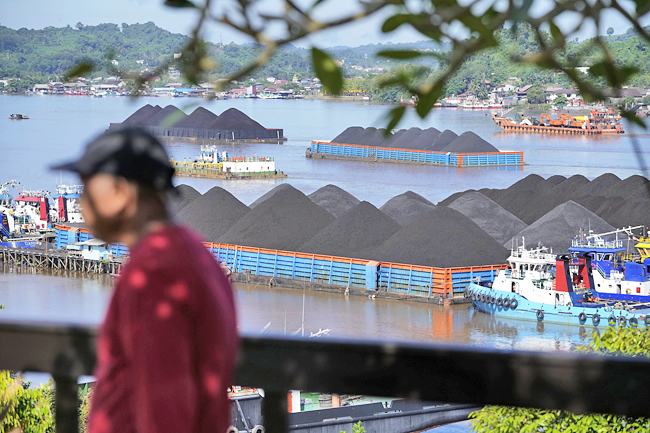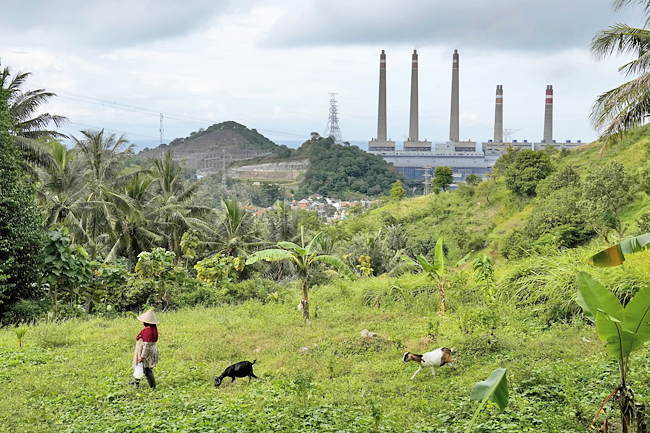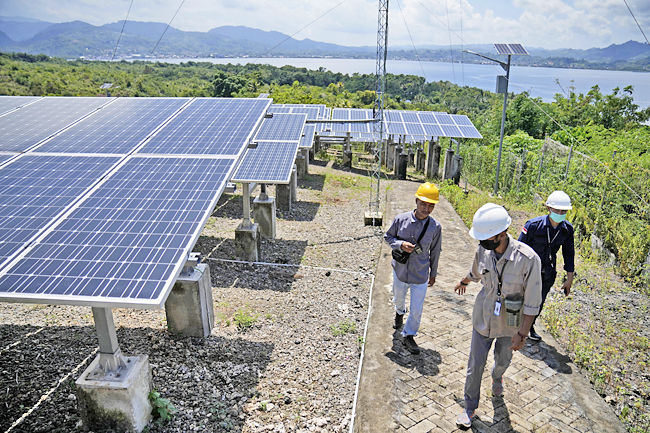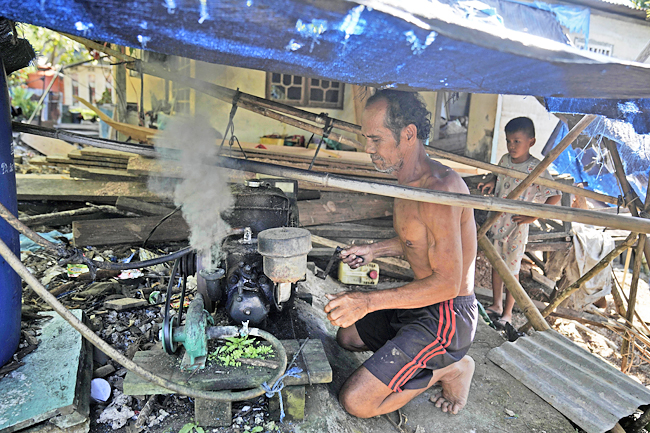SAMARINDA, INDONESIA (AP) – In Indonesia’s region of East Kalimantan, the country’s dependence on coal is on full display.
Driving on the region’s toll road, passersby can watch excavators digging coal from shallow pits as trucks filled with the carbon-rich rocks rush by. Under a bridge in Samarinda, the region’s capital, hundreds of mammoth, jet-black mountains of coal sit in barges being pulled along the waterway, headed to plants across Indonesia or other countries.
They’re sights that Indonesia has pledged to phase out – or at least drastically reduce – by agreeing to some five schemes with international stakeholders, including the largest-signed USD20 billion Just Energy Transition Partnership (JETP) deal. While the deals aim to turn one of the largest coal-producing countries toward its vast greener energy sources, experts warn that financial, policy, infrastructure and other challenges need to be overcome.
Indonesia’s energy transition is very unique because of high economic growth, geography, population centres and clean energy potential, said a principal energy specialist at the Asian Development Bank David Elzinga.
Despite Indonesia’s energy potential from solar, hydropower, geothermal, wind and other sources, only some 12 per cent of them are tapped, according to the International Renewable Energy Agency. Nearly all energy demand is met by fossil fuels, with 60 per cent coming from highly-polluting coal.
That means people like boat maker Jembong, 55, who like many Indonesians uses only one name, can rely on solar for a lightbulb or to watch television. But for the energy-intensive power tools he uses to handcraft boats from his home on Karampuang Island, he needs diesel.





“If I can’t use the diesel engine, I can’t work,” he said.
It’s impacted the environment: In 2021, Indonesia’s energy sector emissions were around 600 million tonnes of carbon dioxide, the world’s ninth highest, according to the International Energy Agency. And population and economic growth are expected to triple the country’s energy consumption by 2050.
It’s a challenging environment to make change while you have such substantial growth, said Elzinga. It is different than a developed country which is characterised by having significant financial resources and low economic growth. Many more-developed economies have stronger renewable ambitions, though researchers say no country is currently in line with global climate goals.
Indonesian officials have signalled they’ve started the shift. They’ve announced new regulations around solar, set a goal to raise the market share of electric vehicles in Indonesia to 25 per cent of total vehicle sales by 2030 and have deployed charging stations. But experts warn Indonesia is lagging behind its Southeast Asian peers.
Indonesia has voiced it needs help from more-developed nations.
“We don’t want to be limited in terms of our ability to grow economically,” said Deputy Coordinating Maritime Affairs and Investment Minister Rachmat Kaimuddin. Industrialised nations can support us.”
With the new JETP deal, Indonesia will aim to reach net zero emissions from the power sector by 2050, bringing forward its target by a decade, and reach a peak in those emissions by 2030. It’s increasing its target for renewable energy to make up over a third of all power generation by 2030, which would mean doubling the pace of current deployment.
But financing remains an obstacle, said an Indonesia-based energy finance analyst at the Institute for Energy Economics and Financial Analysis Elrika Hamdi. By one estimate, Indonesia will need up to USD2.4 trillion in cumulative investment across the energy system by 2050 – a number far larger than the money currently pledged.
“We still have a long way to go to find out… how we could gather up the financing to do this,” said Hamdi.
How the money is provided – be it loans, grants or other funding schemes – is also a concern, said a programme director at the Indonesian Center for Environmental Law Grita Anindarini.
“We just want to make sure that these funds won’t lead to a debt trap,” said Anindarini.
Hamdi raised concerns over how money from transition schemes could be spent. In a recent report, she critiqued a lack of disclosure on the selection criteria for plants selected for early retirement buyouts by Indonesia’s state-owned electric company, PLN, including some plants that will be beyond their economic useful life by 2055. JETP funding could be used to support the buyouts.
PLN should retire them within the next couple of years and write them off, Hamdi wrote in the report.
Another concern raised by activists is that the JETP deal doesn’t make clear what, if any, restrictions it will put in place regarding Indonesia building new coal plants, or whether Indonesia would be required to decrease coal exports. A 2022 presidential regulation provides an exemption to build previously planned coal plants or those attached to nationally strategic projects.
Coal is a valuable part of Indonesia’s economy, with the country being the largest exporter by tonnage in the world. Customers include China, India and Japan. The war in Ukraine has caused a spike in energy costs, with the increased price likely to remain for the next two or three years, said Hamdi.
“You can understand the rationale for them wanting to develop their industries and their natural resources,” said Elzinga. “The responsibility of the development community and those who want to support Indonesia is very much to come up with solutions that allow them to do both.”
In a written statement sent to The Associated Press, CEO of PLN Darmawan Prasodjo wrote that the company has already cancelled some coal-fired plants in their near-term business plan and is committed to lead the energy transition in Indonesia.
Vice chairman of the Indonesia Mining Association Muliawan Margadana and experts raised concerns over the future of communities reliant on the coal industry, which makes up 35 per cent of East Kalimantan’s GDP and employs nearly nine per cent of its population.
“More than 250,000 people are directly employed by coal mining. If we calculate their families, about one million people are impacted,” said Margadana.
But he said that reskilling workers is possible – something Hamdi agrees with.
“What’s important, and will be considered as just, is how the transition funding will be allocated to help these impacted workers, whether through upskilling, reskilling, or community development,” said Hamdi.
Domestic energy policy is also not up to speed with the transition – especially for solar energy, which is a key source on Indonesia’s pathway to net zero – noted Daniel Kurniawan, a researcher who focusses on solar for the Institute for Essential Services Reform.
There is a lack of a solid policy-making environment and political commitment for Indonesia to transition to clean energy amidst the overcapacity, driven by overreliance on coal power, he said. Although that is bound to change with JETP.





